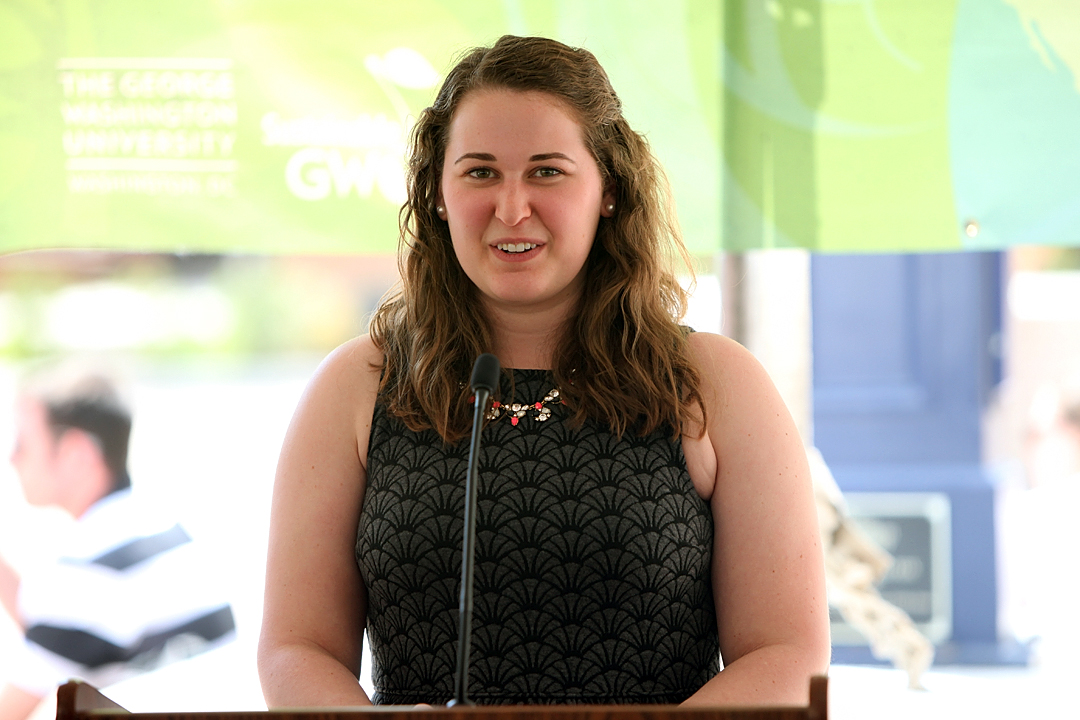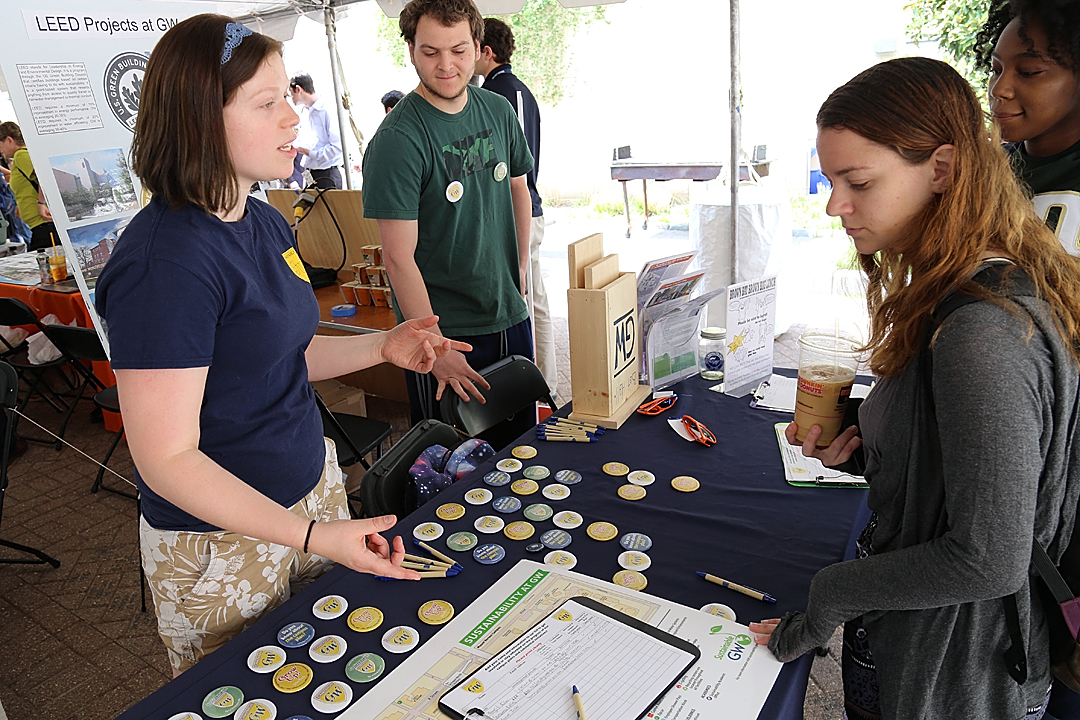More than 100 George Washington University students, faculty and staff celebrated the university’s commitment to sustainability Monday during the annual Earth Day fair with speeches, information booths and games.
Earth Day is globally recognized on April 22.
According to George Washington President Steven Knapp, the university’s progress on sustainability not only includes building a reputation as a “model of urban sustainability,” but it also can be traced to the involvement of students at the university and global levels.
For example, he said, GW senior Ellie Davis was among the GW delegates who attended last December’s Paris climate talks that resulted in a landmark global climate agreement.
“If it wasn’t for our students, we would not be as far as we are on our sustainability goals,” Dr. Knapp said. “I want to thank our students for keeping these issues on the forefront of our university’s attention.”
In keeping with the celebration of student involvement in sustainability, Director of the Office of Sustainability Meghan Chapple announced Hensley Hall the winner of the Eco-Challenge competition, which challenges GW students living in residence halls to conserve electricity and water.
Ms. Chapple also commended student efforts to share the message of sustainability globally from working to eliminate food insecurity, finding solutions to global climate change and creating a community of daily mindfulness of how small actions impact the planet.
“You really inspire me,” Ms. Chapple said. “Sometimes it’s easy to just focus on the GW campus and forget about our role in the community and the world. But this crowd, you never forget that.”
Student Association President-elect Erika Feinman expressed excitement for the SA’s new sustainability cabinet position, which was developed to prioritize student voices on sustainability issues. The first SA director of sustainability will be announced in just a few days.
Feinman said that the grassroots efforts of students to achieve sustainability goals bring to mind the Jewish principle of “tikkun olam,” which translates to “repair the world.” The meaning of the phrase has grown to include the spirit of social action.
“You are all repairing the world in different ways by making the world more sustainable,” Feinman said. “Going forward, I want to make sustainability a priority for the SA.
“I am excited to work together with the many students on this campus who are passionate about sustainability and seek ways to move GW even further forward on this important issue.”

Erika Feinman, SA president-elect, will announce the SA's first director of sustainability in a few days. (Rob Stewart/GW Today)
Executive Director of Sustainability Kathleen Merrigan discussed progress on the academic side of sustainability. According to Dr. Merrigan, GW currently offers 470 classes with sustainability content and has 200 faculty members engaged in sustainability research.
“Our goal is to make sure that every department at GW has a class with sustainability content,” Dr. Merrigan said. “It is one of our core values.”
Sustainability-minded student organizations and GW departments such as Green GW, Planet Forward, the Sustainability Collaborative, GW Recycles and more set up tables beneath a large white tent during the event. Fossil Free GW, a student organization focused on divestment from fossil fuels, conducted a silent, organized demonstration at the event.
Among the students sharing information with the university community was Sabrina Freese, a senior in the Columbian College of Arts and Sciences who has volunteered for Campaign GW since her freshman year. She said that her time working with Campaign GW has helped her to connect student groups with the GW administration so that they can collaborate on sustainability projects.
She has also developed a fondness for the green spaces on campus. For example, Square 80, which is also called South Yard, uses a permeable surface to collect rainwater in a cistern and divert water runoff that can bring pollutants into local water streams.
“I came to GW for the location, and when I found how committed to sustainability GW is, it was really exciting,” Ms. Freese said. “My favorite thing about GW’s sustainability efforts are the green spaces on campus because it’s a really great example of how GW recognizes a problem in an urban environment and creates a solution for it.”


